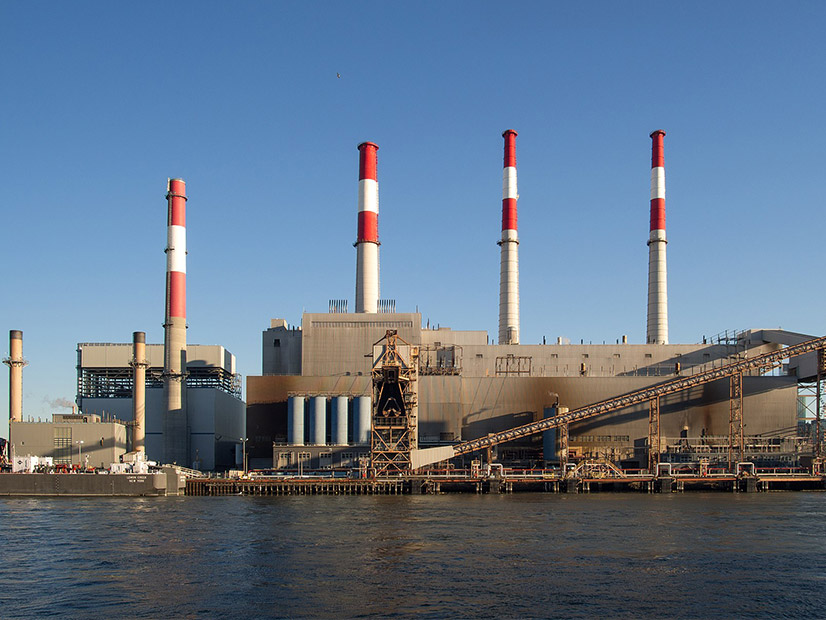
Ravenswood Generating Station in Queens, N.Y.
| Rhododendrites, CC BY-SA 4.0, via Wikimedia Commons[EDITOR’S NOTE: A previous version of this story incorrectly stated that the Astoria natural gas plant is retiring in 2023. Several peaker units based in the Astoria neighborhood of Queens, N.Y., are scheduled to retire.]
NYISO’s draft 2022 Reliability Needs Assessment (RNA) found no reliability issues until 2032 but did identify tightening transmission security and resource adequacy margins across New York, staff told the Management Committee on Wednesday.
Those margins mean generators affected by the state’s so-called “peaker rule” may need to remain operational until either the Champlain Hudson Power Express (CHPE) transmission project or other resources are completed.
The rule imposed strict nitrogen oxide emission requirements on state power plants, which will force many old gas-fired plants to deactivate. It goes into effect May 1, 2023; plants must comply with it by that date or be shut down.
Several members of the committee, which voted to recommend the draft RNA for approval by the ISO’s Board of Directors, expressed concern that certain utilities’ transmission projects will not be completed by the deadline.
“It’s Oct. 26. There are growing concerns about what’s going to happen May 1,” said attorney Doreen Saia, of Greenberg Traurig. Saia was particularly concerned about a Consolidated Edison project being built to account for the retirement of peakers in Queens. “It is critical for the NYISO to — in writing, in a presentation — to confirm that you have been advised that the project is on schedule and will be completed by the May 1, 2023, date. It is not good for the market to have the kind of uncertainty that is sitting out there.”
She said that more transparency around the status of Con Ed’s local transmission plans would alleviate many of the concerns and suggested that the ISO conduct a peaker assessment to help stakeholders better forecast resource planning.
Liam Baker, vice president at Eastern Generation, concurred with Saia, saying that as “the largest owner of assets impacted by the peaker rule,” it is “very hard to make plans” without knowing what the future holds.
Zach Smith, NYISO vice president of system and resource planning, responded that the ISO’s short-term assessment of reliability (STAR) reports have included such assessments since the peaker rule compliance plans were filed in 2020, and that the ISO will continue to get the information across to stakeholders as “transparently as possible.”
Kevin Lang, partner at Couch White, asked when NYISO would “notify developers that they need to stay on” so that they have “enough time to take whatever measures” necessary to remain active and avoid any “gap periods.”
Smith responded that the ISO needs to “continue monitoring this on a quarterly basis” and that these decisions would likely be reported in any future STAR reports.
The ISO also emphasized that the CHPE project is important to the state’s future reliability and that if it is delayed, New York City could see its transmission security margins become deficient by 2028. (See “ISO: Champlain Hudson Critical to NY Reliability in Future,” NYISO Operating Committee Briefs: Oct. 13, 2022.)

